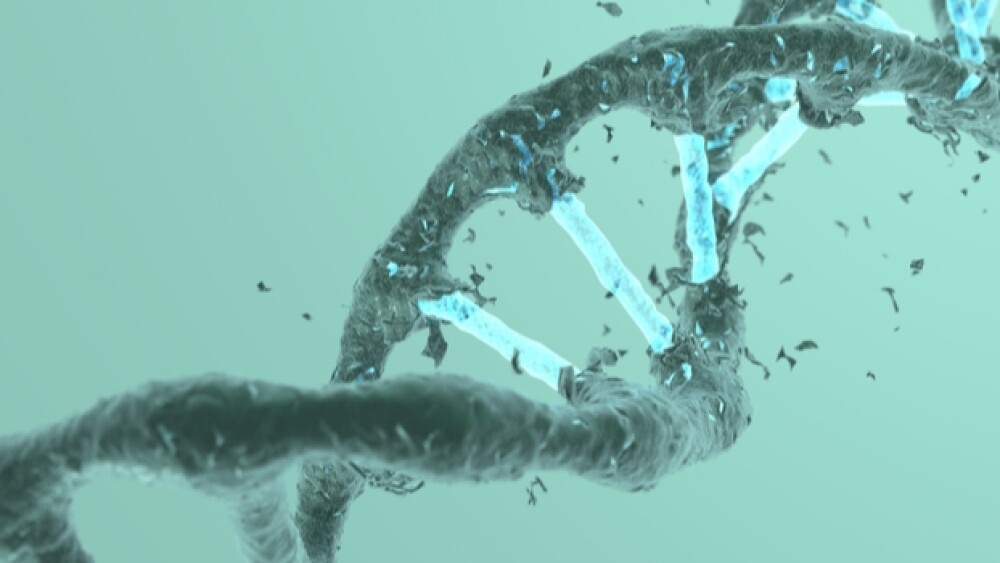CRISPR Therapeutics and Vertex Pharmaceuticals announced positive interim data from the first two patients in the companies’ ongoing Phase I/II clinical trials of its CRISPR/Cas9 gene-editing therapy CTX001.
CRISPR Therapeutics and Vertex Pharmaceuticals announced positive interim data from the first two patients in the companies’ ongoing Phase I/II clinical trials of its CRISPR/Cas9 gene-editing therapy CTX001.
One of the patients with transfusion-dependent beta thalassemia (TDT) was treated with CTX001 in the first quarter of 2019. The data reflects nine months of safety and efficacy follow-up.
The second patient has severe sickle cell disease (SCD) and received CTZX001 in mid-2019. The interim data is for four months of safety and efficacy follow-up.
For the treatment, patients have hematopoietic stem and progenitor cells collected from their peripheral blood. The cells are then edited using CRISPR/Cas9. The edited cells, which are called CTX001, are then infused back into the patient as part of a stem cell transplant.
The TDT patient prior to the treatment required 16.5 transfusions per year. After treatment, the patient achieved neutrophil engraftment 33 days after CTX001 infusion and platelet engraftment 37 days after infusion. There were two serious adverse events, but the principal investigator did not believe they were related to CTX001. One was pneumonia in the presence of neutropenia and veno-occlusive liver disease associated to busulfan conditioning, which is part of a stem cell transplant used to destroy the original bone marrow that has the mutation in it.
Nine months after CTX001 infusion, the patient was transfusion independent. Total hemoglobin levels were 11.9 g/dL, 10.1 g/dL fetal hemoglobin, and 99.8% F-cells.
The SCD patient had seven vaso-occlusive crises (VOCs) annually. Thirty days after CTX001 infusion, the patient reached neutrophil and platelet engraftment. This patient had three severe adverse events, none of which the principal investigator believed were related to CTX001. They were sepsis in the presence of neutropenia, cholelithiasis, and abdominal pain. All resolved. Four months after treatment, the patient was free of VOCs and had total hemoglobin levels of 11.3 g/dL, 46.6% fetal hemoglobin, and 94.7% F-cells.
“The data we announced today are remarkable and demonstrate that CTX001 has the potential to be a curative CRISPR/Cas9-based gene-editing therapy for people with sickle cell disease and beta thalassemia,” said Jeffrey Leiden, chairman, president and chief executive officer of Vertex. “While the data are exciting, we are still in the early phase of this clinical program. We look forward to continuing to work with physicians, patients, caregivers and families over the coming months and years to bring forward the best possible therapy for these two serious diseases and to continue to accelerate our gene-editing programs for other serious diseases such as Duchenne muscular dystrophy and myotonic dystrophy type 1.”
These data are very strong evidence of the promise of CRISPR treatments that could potentially cure diseases. CRISPR and Vertex are not the first, however. Bluebird Bio received approval in Europe for its gene therapy, Zynteglo, for transfusion-dependent beta-thalassemia. It uses a different approach than Vertex and CRISPR Therapeutics, and it does not work in all patients. A decision by the U.S. Food and Drug Administration (FDA) is expected in 2020. The therapy has a price tag of about $1.75 million spread over a five-year installment plan.
Mitchell Weiss of St. Jude Children’s Research Hospital, told STAT, that after years of sickle cell research neglect, these new approaches represented a “perform storm…. For decades, we knew about the sickle cell disease mutations, but we didn’t know about other genes [involved in the disease] and we didn’t have the necessary tools for genetic correction” of blood-making stem cells. “Now we have a confluence of scientific understanding and technology that can come together to make things happen.”





